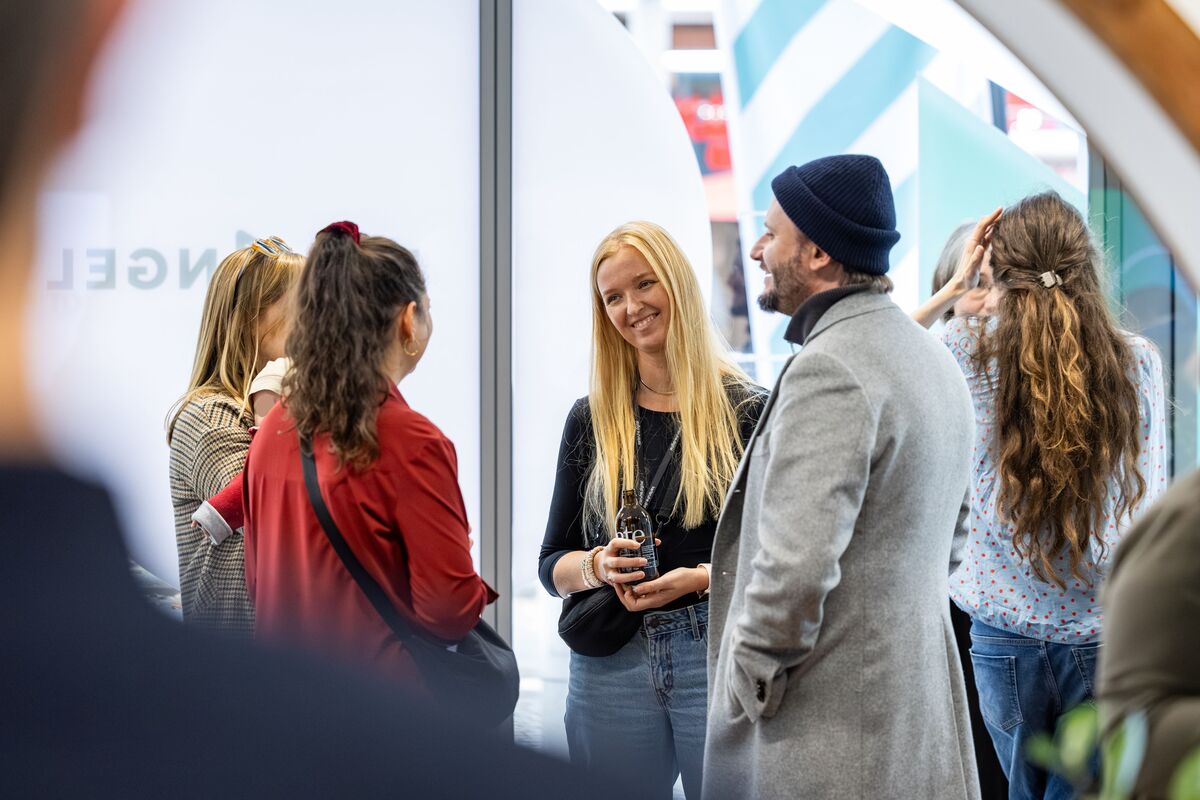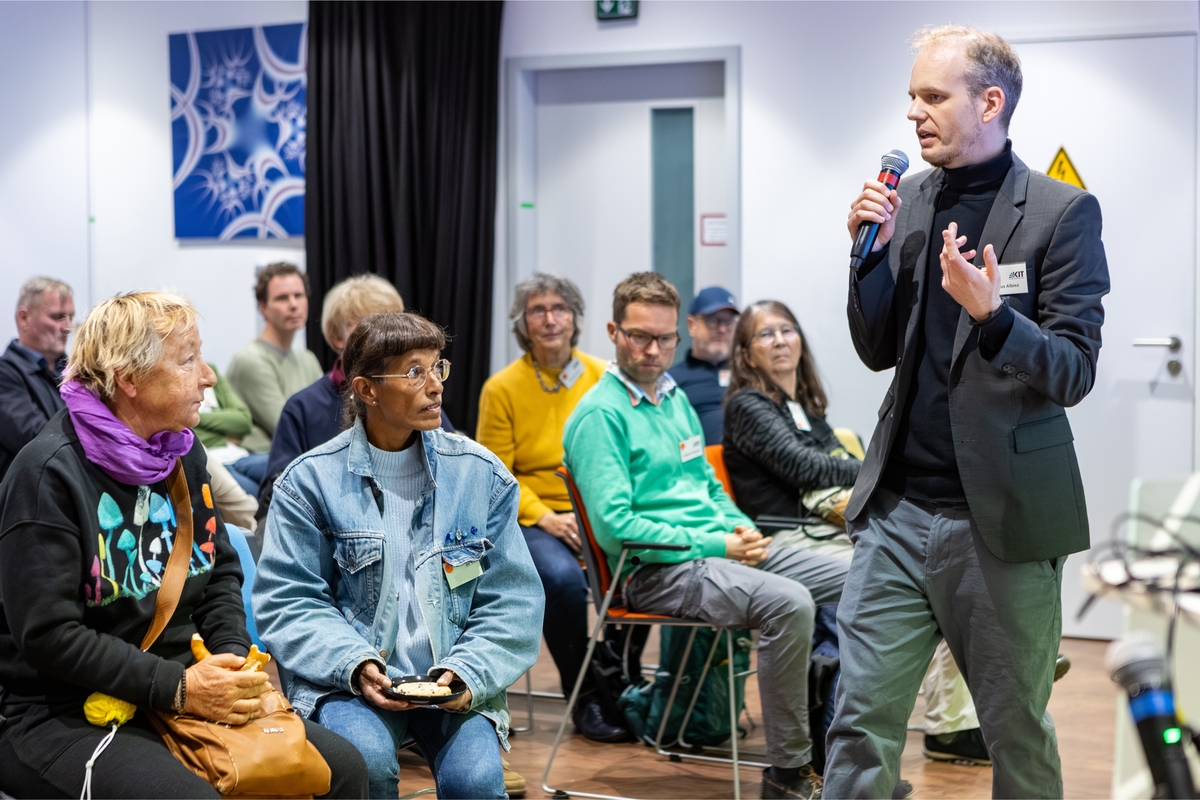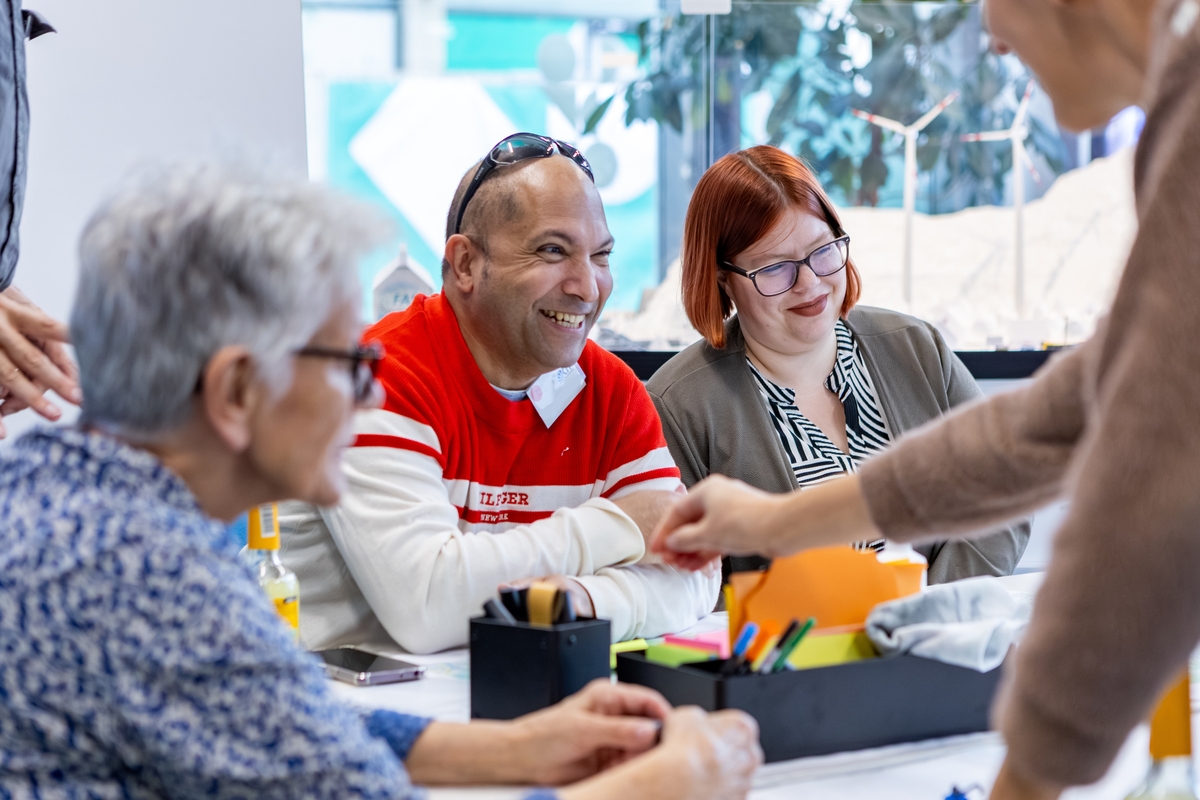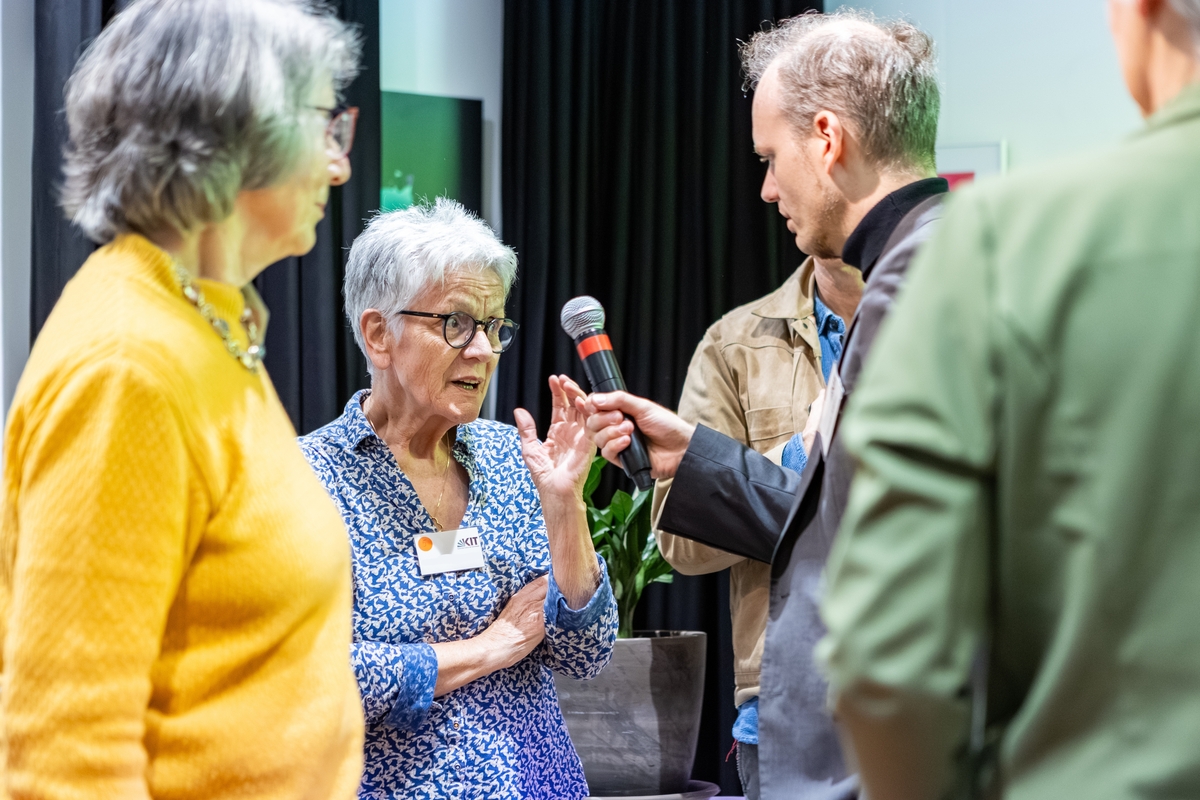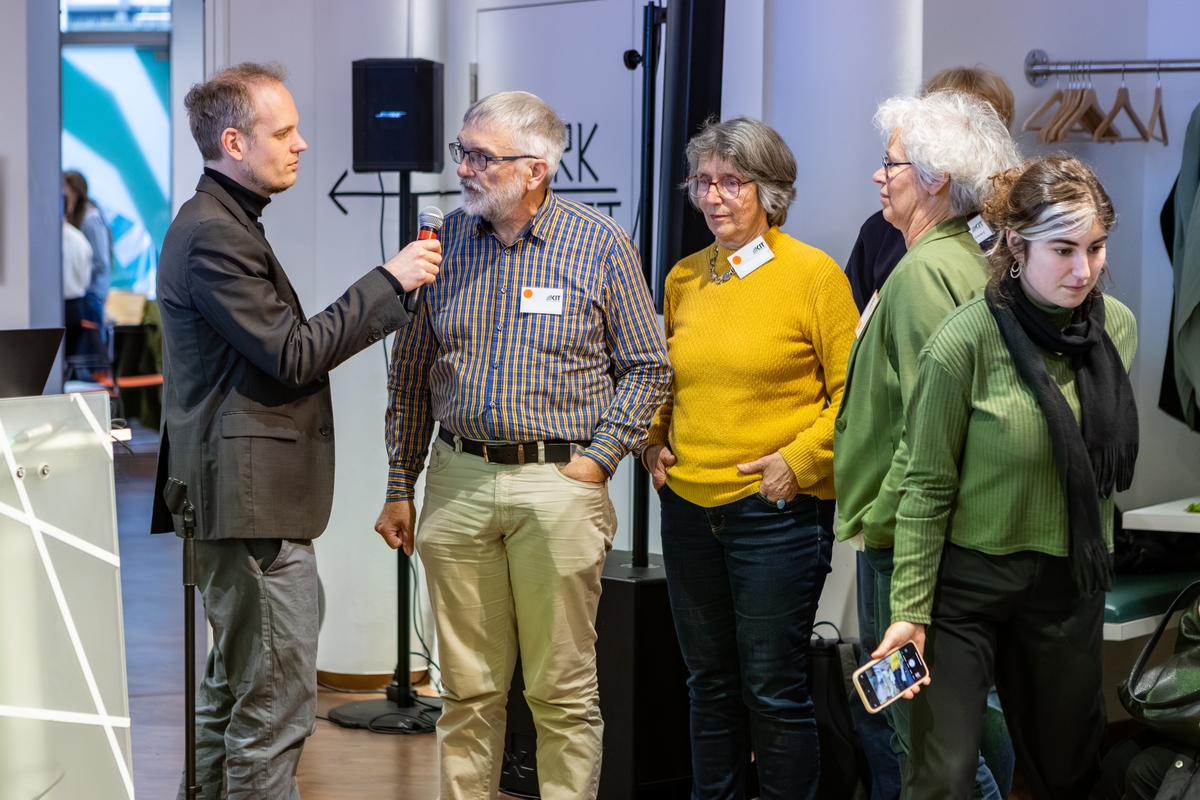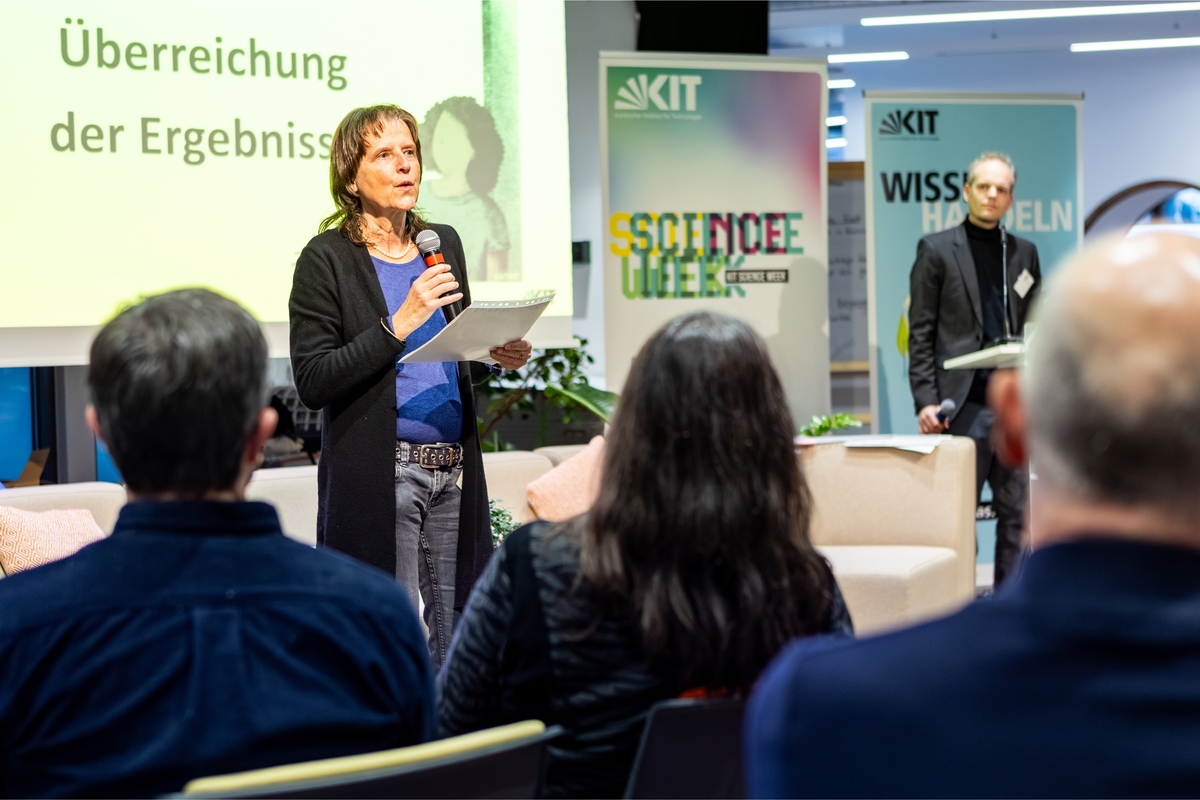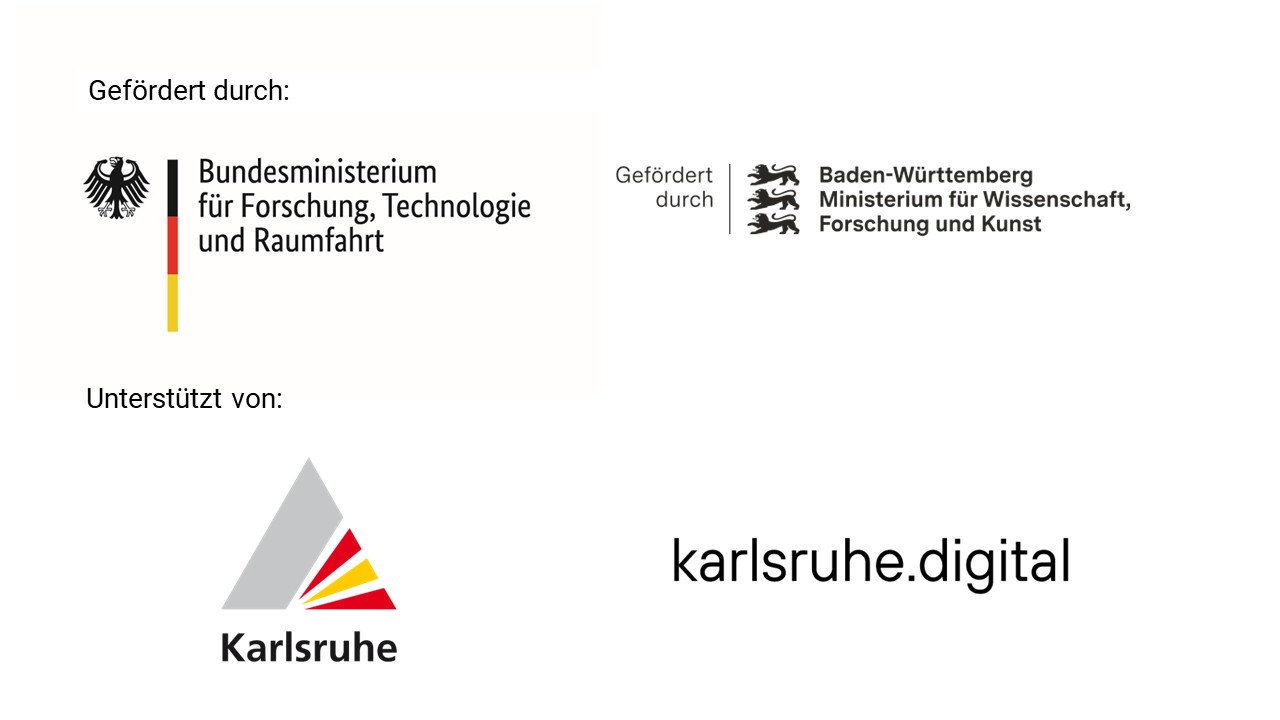Bürger:innendialog "Turbulenzen global, mitgestalten lokal" | KIT Science Week 2025
-
type of event:
Dialogveranstaltung
-
date:
18.10.2025
(Begleitevents am 01.10, 04.10. & 06.10.) -
time:
14:00 - 18:00
-
place:
TRIANGEL Transfer | Kultur | Raum, Kaiserstraße 93, 76133 Karlsruhe
Global turbulence, local involvement! Citizens discuss Karlsruhe's future in dialogue
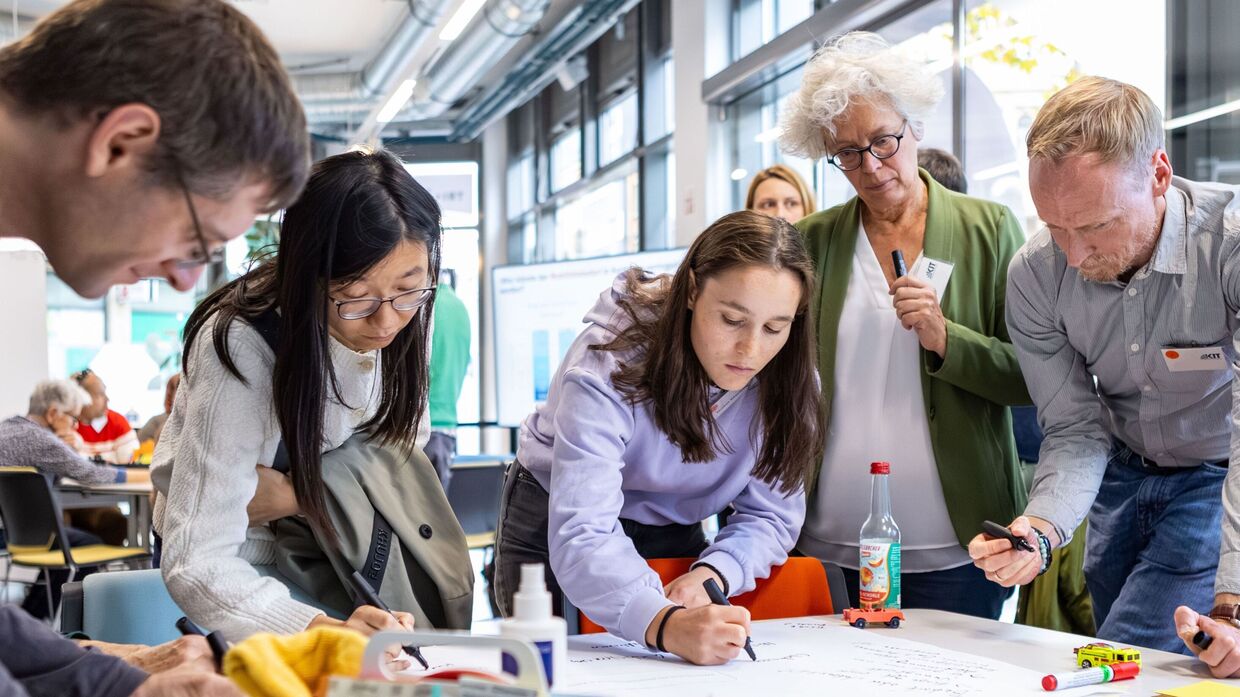
A glance at the news is enough to see that the world is changing. Global warming and the destruction of ecosystems are not only endangering our natural resources, but also threatening prosperity on Earth. At the same time, we are seeing new technologies such as artificial intelligence increasingly shaping our everyday lives. These changes also affect how we live together in and around Karlsruhe – today and in the future. Likewise, the way we travel, maintain green spaces, and feed ourselves influences the present and future of our planet.
Global crises, local solutions: As part of KIT Science Week 2025, citizens, researchers, and city representatives gathered at TRIANGEL to discuss Karlsruhe's future. Under the motto “Global turbulence, local involvement!”, the focus was on how the city can remain livable in times of climate change, digitalization, and social change, and what contributions KIT could make to this end.
Not just one dialogue, but four
Comparing the dialogue with past events, several innovations are immediately apparent. For the first time, the main dialogue was supplemented by three thematic events in the run-up to the event. These included:
- October 1, 2025 | Green oases against heat traps – what does Karlsruhe's green future look like?
- October 4, 2025 | Tram, bicycle, air taxi – how do we want to get around in and around Karlsruhe tomorrow?
- October 6, 2025 | What does good food mean to us? Thinking together about the value of nutrition.
The events made it possible to focus on specific areas and issues – such as the advantages and challenges associated with planting shade-providing street trees, or what else should be considered when designing our future food system besides taste and environmental impact. Citizens noted that it is often worthwhile to look beyond the borders of Karlsruhe and Germany, whether in terms of heat protection or dealing with traffic volumes.
Researchers from the Institute for Technology Assessment and Systems Analysis (ITAS) then analyzed the results of the accompanying events and selected key findings for the main dialogue on October 18.
This year, interested citizens were once again able to participate as citizen ambassadors, thus building a bridge between science and society. The ambassadors were participants who had been invited in advance to gain deeper insights into Science Week and to bring their impressions to the dialogue event. In addition to the main dialogue, they attended other KIT Science Week events, such as various lectures, a science slam on the city of the future, and the “13 Questions” debate format. They also had the opportunity to learn about selected ITAS research on sustainable neighborhood development and the future of work in a small group setting.
City and research together
Another special feature of this year's dialogue series was the close connection between the ITAS dialogue team and the city of Karlsruhe. In particular, the Science Office of the Economic Development Agency, the karlsruhe.digital initiative, and the Real Estate Office of the City of Karlsruhe supported the preparation and implementation of the individual events as contact persons and sources of ideas for Smart City Karlsruhe. Communication was also supported through the karlsruhe.digital initiative network. Digital city models and data tools helped to illustrate discussions and highlight local perspectives. These included a 3D map illustrating heat stress in Karlsruhe and excerpts from the Karlsruhe mobility portal.
The collaboration illustrates how research and city administration can work together on sustainable visions for the future. In addition, researchers from the “PaFo” project accompanied the four events to learn more about the relevant framework conditions and effects of the dialogues.
The main dialogue: Citizens as experts
On Saturday, October 18, 2025, the time had come: A diverse group of participants from different parts of the city discussed how Karlsruhe could remain livable in the future and developed ideas and questions for KIT. Participants also had the opportunity to learn about the digital services offered by the city of Karlsruhe and to exchange ideas with city representatives about the vision of a “smart city.” At the information table of the KIT initiative “wir forschen digital” (we research digitally), attendees were also able to learn about recognizing phishing messages in a playful way.
Participants were welcomed by the deputy director of ITAS, Constanze Scherz, and KIT Vice President for Digitalization and Sustainability, Prof. Dr. Kora Kristof, who later also received the results for KIT.
Before the in-depth exchange began, the citizens formed a so-called “living statistic.” Those present were invited to position themselves in the room according to various questions and theses, such as the question: “How do you view the future of the city of Karlsruhe?” The citizens positioned themselves along a line from “very optimistic” to “very pessimistic” and expressed their views in the form of short statements. The format ensured a lively start and showed how differently the future is perceived.
The event continued with an introduction by ITAS researcher Marius Albiez, before attendees discussed the following questions in two rounds at six discussion tables:
- How can the city improve heat protection in Karlsruhe? (Tables 1 and 2)
- (How) could mobility needs in Karlsruhe be reduced? (Tables 3 and 4)
- How could the population of Karlsruhe be supplied with food safely and affordably? (Tables 5 and 6)
Each discussion round began with a short input from the research team, followed by a “silent table discussion.” In this format, participants first wrote down their own perspectives with pen and paper – without speaking or engaging in conversation. The citizens at each table filled a large flipchart with their thoughts and commented on selected points in writing as needed. This method allows for different discussion styles.
After taking a look at the colorful flipcharts, the moderators moved on to an intensive exchange based on the research. The citizens acted as experts on their own life circumstances. The areas and topics addressed were correspondingly diverse. At table four, for example, the range of topics covered everything from the role of employers to mobility restrictions and the mindset of travelers. In this way, the large-format sheets and display boards quickly filled up with ideas and personal perspectives, which were discussed with great enthusiasm – but always respectfully – depending on the situation. At the request of the participants, representatives of the city contributed their perspectives and helped to place the different points of view in the overall urban context. At the end of each roundtable discussion, the participants agreed on ideas and research questions that KIT should explore in more depth in the future.
KIT Vice President receives results
The results were finally handed over to Vice President Kristof by the citizen ambassadors. She took up the respective ideas, classified them, and drew initial connections to research at KIT. The results show an impressive thematic breadth – from technical innovations to social issues. For example, citizens suggested developing new materials for facade cooling or taking a close look at established best practice approaches to heat protection. Furthermore, the relevance of communication and transfer was emphasized across the board – whether to communicate existing approaches in line with needs or to bring theoretical knowledge into urban administrative practice. Well-known solutions were also critically examined and further developed. For example, participants suggested researching the concept of the “15-minute city” not only in the context of metropolises, but also for smaller towns and communities. Other suggestions included setting up a real-world laboratory for food issues with close links to local farmers, as well as promoting and researching vertical farming in the city.
The results of the dialogue will now be shared within KIT with relevant institutes and centers. The aim is to identify points of contact for research and development and, where possible, to incorporate them into ongoing or new projects. The event also serves as inspiration for the further development of dialogue formats at ITAS.
The afternoon showed how great the interest of the Karlsruhe population present is in jointly shaping the future and conducting research.
Contact
- Marius Albiez(marius.albiez1∂kit.edu)
- Andreea Koch(andreea.koch∂kit.edu)
The Citizen Dialogue is an event in the program of KIT Science Week 2025, sponsored by the Federal Ministry of Research, Technology, and Space (BMFTR) and the Baden-Württemberg Ministry of Science as part of the federal and state excellence strategy.


